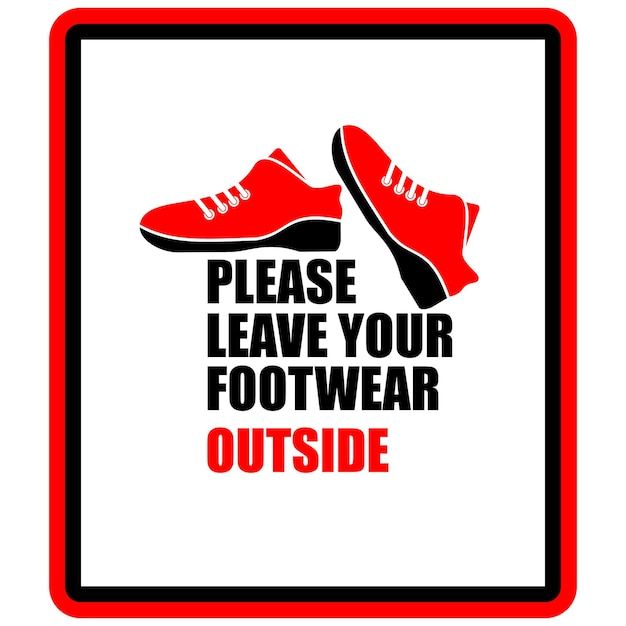Surprising Reasons Why You Should Never Wear Shoes Inside
Removing your shoes before entering a home or certain indoor spaces is a common practice in many cultures around the world. While it may seem like a small gesture, it has deep historical, cultural, hygienic, and social significance. Understanding why this practice is important can improve your health, relationships, and overall awareness of social etiquette.
- History of Removing Shoes Indoors
- Facts About Not Wearing Shoes Indoors
- Timeline of the Shoe-Removal Practice
- Significance of Not Wearing Shoes Inside
- Daily Life Impacts
- Observance and Important Points
- Common FAQs About Not Wearing Shoes Inside
- Wishing and Social Significance
- Conclusion: Importance in Daily Life and Society
This comprehensive guide explores the history, significance, daily life impact, and societal relevance of not wearing shoes inside. It includes timelines, facts, FAQs, and practical insights into human behavior, helping you understand why this simple act carries powerful implications for hygiene, respect, and mindfulness.
History of Removing Shoes Indoors
The practice of removing shoes indoors dates back thousands of years and spans many cultures:
Ancient Civilizations: In ancient Egypt, Greece, and India, footwear was considered dirty, and removing shoes was a sign of respect for the household or sacred spaces. Temples, palaces, and homes often required barefoot entry.
Religious Practices: Many religions encourage removing shoes as a sign of respect. Hinduism, Buddhism, and Islam, for instance, have long-standing traditions of leaving shoes outside sacred areas.
Japanese and East Asian Traditions: Japan, Korea, and China have maintained strict customs of shoe removal to maintain cleanliness and honor the household. Tatami mats and clean floors required bare feet or indoor slippers.
Modern Times: Today, many cultures adopt this practice for hygiene and respect, especially in homes, certain workplaces, and cultural or religious venues.
Facts About Not Wearing Shoes Indoors
Reduces dirt and germs: Shoes carry bacteria, fungi, and dirt from outdoors. Removing them keeps floors cleaner and healthier.
Protects home interiors: Shoes can damage delicate flooring, carpets, and mats.
Promotes hygiene: Limits the spread of allergens, pesticides, and chemical residues brought from outside.
Cultural respect: Following this practice demonstrates awareness and respect for household norms and traditions.
Comfort and mindfulness: Walking barefoot or in indoor slippers encourages relaxation, grounding, and connection with the home environment.
Timeline of the Shoe-Removal Practice
3000 BCE: Ancient Egyptians and Mesopotamians practiced barefoot entry in temples and homes for hygiene and respect.
500 BCE – 400 CE: Religious texts and cultural customs in Asia and the Middle East emphasized shoe removal in sacred spaces.
Middle Ages: In Europe, footwear was often removed when entering churches or noble homes to preserve cleanliness.
19th Century: Domestic etiquette manuals encouraged removing shoes to maintain hygiene and protect flooring.
20th Century: Growing awareness of germs, chemicals, and allergens reinforced the practice in homes globally.
21st Century: Modern households and public spaces, especially in Asia and eco-conscious homes worldwide, continue the practice for health, cleanliness, and respect.
Significance of Not Wearing Shoes Inside
Not wearing shoes indoors has practical, social, and cultural significance:
Hygiene and health: Reduces the risk of bringing bacteria, viruses, and allergens into living spaces.
Respect for others: Demonstrates mindfulness of the household’s comfort and cleanliness.
Cultural awareness: Observing this practice shows sensitivity to local customs, particularly when visiting homes or religious spaces.
Floor preservation: Protects flooring materials, carpets, and mats from wear, scratches, and dirt.
Mindful living: Encourages mindfulness, grounding, and a conscious approach to daily habits.
Daily Life Impacts
The practice of removing shoes influences daily life in many ways:
Family life: Promotes cleanliness and comfort, reducing conflicts about hygiene inside the home.
Social visits: Guests who remove shoes show respect, improving relationships and fostering goodwill.
Health benefits: Reduces exposure to allergens, harmful chemicals, and germs.
Workplace or studio settings: Places like yoga studios, clinics, and certain offices maintain hygiene and professionalism through shoe removal policies.
Cultural understanding: Encourages awareness of cultural norms and fosters respect in international or multicultural environments.
Observance and Important Points
To practice shoe removal effectively, consider these guidelines:
Follow household norms: Always ask if shoes are allowed inside before entering.
Provide indoor footwear: Use clean slippers or socks for comfort and hygiene.
Keep a shoe rack: Maintain organization and cleanliness near entryways.
Educate children: Teach the habit early to instill respect and hygiene awareness.
Sanitize footwear: Occasionally clean shoes to reduce the spread of germs, even if not worn indoors.
Be mindful in shared spaces: Even in workplaces or studios, follow shoe removal rules to maintain hygiene and respect.
Observe religious or cultural customs: Many sacred spaces require strict barefoot entry; always comply with these practices.
Common FAQs About Not Wearing Shoes Inside
Q1: Why should I not wear shoes indoors?
A: Shoes carry dirt, germs, allergens, and chemical residues from outside, which can compromise hygiene, health, and cleanliness indoors.
Q2: Does removing shoes help prevent illnesses?
A: Yes. It reduces exposure to bacteria, fungi, viruses, and chemicals, contributing to a healthier indoor environment.
Q3: Is this practice universal?
A: While shoe removal is common in many Asian and Middle Eastern cultures, it is less emphasized in some Western countries. Awareness of local customs is key.
Q4: Can slippers be used indoors?
A: Yes. Clean indoor slippers maintain hygiene while providing comfort and respect for the household.
Q5: How does shoe removal affect children?
A: Teaching children to remove shoes instills hygiene habits, respect for the home, and mindfulness from an early age.
Wishing and Social Significance
Observing the shoe removal practice has social, cultural, and personal significance:
Encourages respect: Demonstrates awareness of household rules and cultural practices.
Promotes mindfulness: Creates a conscious connection with indoor spaces and home cleanliness.
Protects family health: Reduces the spread of germs, allergens, and pollutants inside the home.
Supports social harmony: Guests following this practice show consideration, improving relationships and social trust.
Cultural appreciation: Observing this practice when traveling or visiting other cultures fosters cross-cultural understanding and respect.
Conclusion: Importance in Daily Life and Society
Not wearing shoes inside is a small act with significant benefits. From ancient civilizations to modern households, the practice has been tied to cleanliness, respect, and mindfulness. Following this simple habit promotes hygiene, protects indoor spaces, and strengthens social etiquette.
In daily life, removing shoes encourages respect for families, guests, and cultural norms. It contributes to health by reducing germs, allergens, and harmful substances indoors. Socially, it demonstrates awareness, thoughtfulness, and respect for others’ spaces, improving interpersonal relationships.
Culturally, shoe removal reflects sensitivity to traditions and social norms, especially in homes, religious sites, and workplaces. Mindfulness and respect practiced through this habit also promote a calmer, more intentional lifestyle, fostering awareness of one’s actions and their impact on others.
Ultimately, not wearing shoes inside is more than a rule—it is a symbol of respect, hygiene, and conscious living. By adopting this practice, we maintain cleaner, healthier homes, foster stronger social bonds, and cultivate a mindful approach to daily life.








